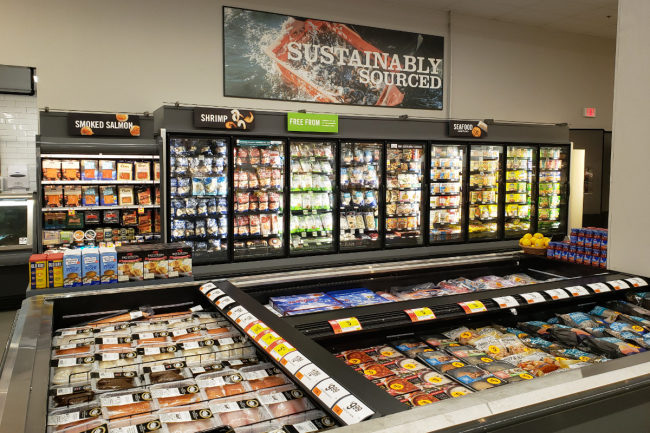Global demand for aquatic foods is set to nearly double by 2050, and with the added production needed to meet that demand, retail prices could fall by 26%.
Those are among the findings of a series of new studies by Blue Food Assessment, an international joint initiative of over 100 scientists from more than 25 institutions committed to promoting seafood and sea plant production and consumption.
Some 166 million micronutrient deficiencies could be averted by 2030 if the global production of marine and freshwater foods is increased by 15.5 million tons (8%), according to the studies, which highlight several ways in which aquatic foods improve human health, including reducing micronutrient deficiencies and offering alternatives to red and processed meat.
“We live in a deeply malnourished world, with billions of people suffering from micronutrient deficiencies and diet-related chronic diseases,” said lead author Christopher Golden, assistant professor of nutrition and planetary health at Harvard University’s T.H. Chan School of Public Health. “Finding ways to sustainably increase the production of blue foods offers an opportunity to increase access to safe, nutritious and healthy diets for the world’s most vulnerable.”
The findings are based on data from the Aquatic Foods Composition Database (AFCD), which was developed to increase understanding of the potential nutritional benefits of aquatic foods. It is now the most comprehensive global database of its kind, profiling 3,753 aquatic food species and hundreds of nutrients, with important implications for nutrition and fishery management policies across the world.
“For the first time, our study highlights the significant role of aquatic foods in meeting the dietary needs of nutritionally vulnerable populations, while also mitigating chronic diseases by weaning people away from red and processed meats,” Golden added.
Other findings in the new studies include:
- Fisheries and aquaculture can play a greater role in healthy diets and more sustainable, equitable and resilient food systems around the world.
- Increase in demand will be largely met by an increase in aquaculture rather than capture fisheries.
- Seafood was found to rank more highly than land animal-source foods in terms of their nutritional benefits and potential for sustainability gains.
- The sustainability of blue food consumption will depend critically on which types of fish are eaten and where they are produced.
A “massive leap” for seafood
“So often overlooked as a major part of the solution, with these reports, seafood has taken a massive leap into the immensely important debate about our future food systems,” says Renate Larsen, CEO of the Norwegian Seafood Council, which represents the companies that export seafood from Norway to the US and around the world and is committed to sustainable practices, innovative technologies and growing US consumer demand for seafood.
Much of the increase in consumption in the coming decades could be driven by markets in Asia and Africa, according to the studies. But the need for increased consumption of seafood is a global one, according to the authors, and blue foods rank higher than terrestrial animal-source foods in terms of both nutritional benefits and potential for sustainability gains.
“It is a massive challenge and literally presents an ocean of opportunities but a task which also comes with great responsibility. We must continue to evolve sustainable aquaculture practices, promote responsible and well-managed wild-catch fisheries and ensure consumers can make conscious and well-informed decisions about the food on their plates,” Larsen said. “For Norway as a leading seafood nation, we recognize the great responsibility we have to continue to evolve our sustainable seafood industry.”
The reports provide a sound scientific foundation for the argument for seafood as a vital part of the future food debate, but a blue foods revolution will require more than just producing more sustainable seafood, said Anne-Kristine Øen, US director for the Norwegian Seafood Council.
“This insight into the future seafood market complements the strong growth in both fresh and frozen seafood we have seen in the past year,” she said. “With our commitment to sustainable practices and innovative technologies, Norwegian seafood will grow along with US consumer demand for versatile, healthy seafood.”
In the wake of the recent UN Food Systems Summit and the Blue Foods Assessment, Larsen said she would like to see more progressive policies and visible efforts to promote sustainable seafood consumption.
“It’s been frustrating how the dietary battlelines up until now have been very much drawn between meat and plants, leaving the immense potential of the oceans largely overlooked. To succeed in this vital shift toward more sustainable, bluer diets, we need action throughout the value chain, from government to producers and retailers and all the way to the consumer.”
Top ten seafoods, per capita consumption, United States:
- Shrimp
- Salmon
- Canned tuna
- Tilapia
- Alaskan pollock
- Pangasius
- Cod
- Catfish
- Crab
- Clams
Source: National Fisheries Institute

